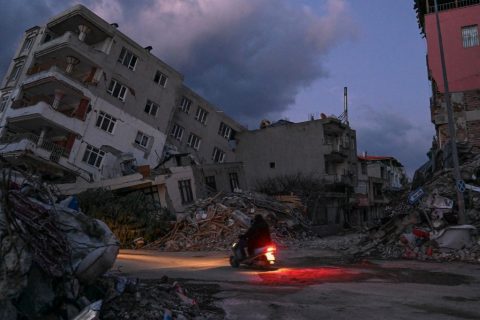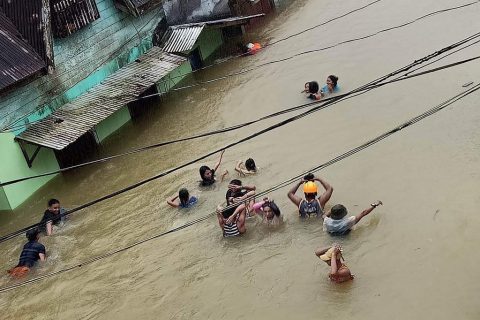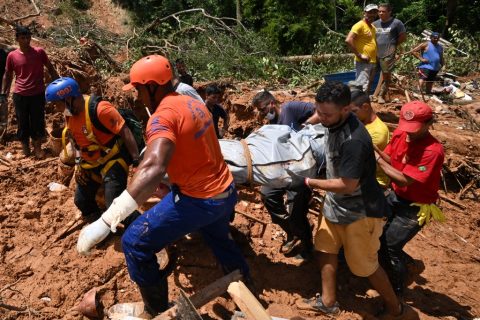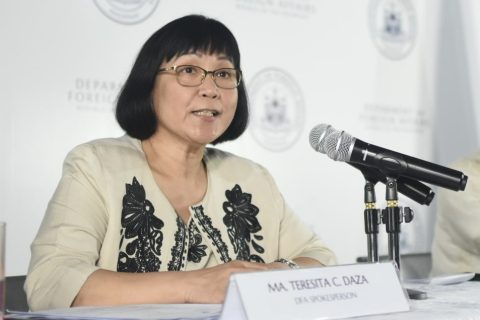Mundo, hindi sapat na handa sa mga sakuna

People on a scooter ride past the rubble of collapsed buildings, a day after a 6.4-magnitude earthquake struck the region, in the coastal city of Samandag on February 21, 2023. - A 6.4-magnitude earthquake was recorded in Turkey's southern province of Hatay, the hardest hit by a February 6 tremor which left more than 41,000 dead in the country, the disaster response agency AFAD said. (Photo by BULENT KILIC / AFP)

Mga lindol, baha, bagyo — ang mundo ay hindi sapat na handa upang harapin ang dumaraming mga sakuna, ayon sa isang ulat na inilathala nitong Martes na nananawagan para muling pag-isipan ang tungkol sa global risk management.
Mula noong 1990, mahigit 10,700 sakuna ang nakaapekto sa mahigit anim na bilyong tao sa buong mundo, ayon sa data mula sa United Nations Office for Disaster Risk Reduction.
Noong 2015, pinagtibay ng international community ang mga pandaigdigang layunin upang mapababa ang casualties at pinsala sa taong 2030 sa pamamagitan ng pamumuhunan sa “risk evaluation and reduction” at maging sa disster preparedness, sa isang deklarasyon na kilala bilang “Sendai Framework.”
Gayunpaman, “mas malamang na hindi natin matugunan ang mga layunin ng Sendai Framework sa 2030 dahil sa kasalukuyang trends,” ayon sa isang ulat ng International Science Council (ISC), na kinabibilangan ng dose-dosenang mga siyentipikong organisasyon.

Ang mga baha at bagyo, na pinalala ng pagbabago ng klima o climate change, ay nangunguna sa listahan ng mga sakuna at bumubuo sa 42 porsiyento ng kabuuan.
Ayon sa report, “The cascading disasters are setting back hard-won development gains in many parts of the world.”
Sinabi ni ISC president Peter Gluckman, “Far too little attention and investment is put to long-term planning and prevention, from strengthening building codes to adopting hazard alert systems.”
Aniya, “This lack of preparedness comes even as the international community is quick to mobilize after disasters like the recent earthquake in Turkey and Syria.”
Ayon naman kay Mami Mizutori, UN special representative for disaster risk reduction, “The multiple challenges of the last three years have laid bare the fundamental need for greater global readiness for the next disaster. We need to reinforce our infrastructure, communities, and ecosystems now, rather than rebuild them in the aftermath.”

Ang ulat ay nagbigay din ng pansin sa mga isyu ng resource allocation. Halimbawa, 5.2 porsiyento lamang ng tulong para sa mga umuunlad na bansa para sa pagtugon sa sakuna sa pagitan ng 2011 at 2022 ang nakatuon sa risk reduction. Ang natitira ay inilaan sa relief at post-disaster reconstruction.
Ang ISC ay nananawagan para sa malawakang paglalagay ng early warning systems, banggit na ang 24-oras na notice ng isang bagyo ay makapagpapabawas sa pinsala ng 30 porsyento.
Sa isang ulat na inilabas ng UN General Assembly sa huling bahagi ng Enero, ay nabanggit din na ang mga bansa ay wala sa landas upang maabot ang mga layunin sa ilalim ng Sendai framework.
Hindi lamang tumataas ang bilang ng mga taong apektado ng mga sakuna bawat taon, kundi pati na rin ang direktang pinsala, na umabot sa average na $330 bilyon bawat taon sa panahon ng 2015-2021.
© Agence France-Presse






